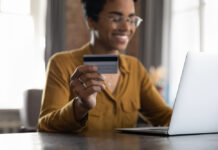Since the pandemic, online shopping, purchases, and online transactions increased exponentially. The flexibility, ease, and convenience of obtaining what we want without leaving the comforts of our home are the main selling points for online payment and shopping transactions — and these need online protection.
It is an inevitable transformation of the 21st century — every business now needs an online presence, an online gateway, and an online payment system. These allow customers to find out more information about the company and decide to purchase, whether online or offline.
However, there is always the potential risk of having your payment information stolen if you do not have online protection. Getting your payment information stolen is “Digital mugging in the online world.” There are many ways of digital mugging, just as there are different ways for internet criminals to obtain your information.
Some of the most common ways are through scams and hacking. Just like how you practice measures to reduce the risk of theft and burglary to your physical assets, you take steps to practice caution when you shop and pay online. Here are steps to get online protection and to stay on top of your online payment and shopping footprint:
Be Mindful with Your Transactions
Online payment gateways make it easy for customers to make payments using their bank accounts, credit cards, or other payment solutions such as PayPal or Apple wallet. You only enter your payment information once on an app or a website and choose whether you want to retain this information for future purchases. This is convenient but risky. The danger lies in unnoticeable transactions that take place on your payment systems. They usually start small and snowball into more significant purchases if you do not keep track of your assets. Hackers sometimes make transactions on credit cards and online wallets for a small sum, and if you do not check and keep track of your expenses, you run the risk of hackers using your cards to make continuous and unauthorized payments.
What if your mobile devices are stolen or broken? What if you have trouble accessing your online wallets? Experts recommend separating your transactions into different wallets according to their importance, just like your bank accounts. Keep one wallet for daily transactions, one wallet for more significant expenditures, one for investments, and so on.
Keep Your Devices’ Software Updated
Whether it is a mobile phone, laptop, iPad or computer — keeping software updated and running is crucial for internet security and device health. Viruses and malware exist anywhere on the internet. Hackers use these tools to break code, hack into drives, manipulate systems, and alter algorithms. Keeping your virus protection updated is a barrier to getting these malicious threats from entering your files and folders and gaining access to confidential information.
Always Protect Your Identity
This is a critical step to put into practice no matter where you go and what you do. Keep your identity papers, information, social security, passport, bankcards, and any other confidential details secure. So, whenever you go online, be careful where you share your information and which sites require transaction information. Revealing any information on personal ID leads to negative consequences.
Back Up Your Virtual Wallets
Like any other backup policy, it is always good to back your virtual information daily or weekly so that no data is lost. Frequent updates are necessary to keep the security of your wallet in check. When backing up your data, keep the data encrypted.
Speaking of encryption, doing this to your wallet is crucial, especially if this wallet is stored online. Use a strong password that uses a combination of words — upper and lower case, numbers, and symbols. DESlock+ is one such tool that encrypts your files and wallets that contain this sensitive information. If possible, encrypt your whole system or user space to store these sensitive files.
Use Two-Factor Authentication
When sourcing for online storage services, always go for services that offer two-factor authentication and the use of hardware wallets. These are essential items to keep as parts of your arsenal against malware and viruses and hacking. This is because even service providers are vulnerable to hacking.
Avoid Storing Your Payment or Credit Card Details on Mobile Devices
Avoid using your mobile devices for transactions of large amounts of money. Mobile devices have higher likelihoods of being compromised. Even if you prefer leaving your credit card details on mobile shopping apps, add in any two-factor authentication procedure and set up notifications and limits on your card. This way, you receive notification by email or text (or both) — in the event of any suspicious activity.
Update Your Networks
Regularly update and maintain your systems and networks that use online transactions. This also means updating or changing your passwords and usernames. This advice goes even for online bank accounts. Update your security solutions and do regular scans for every network, system, and operating software you use.
Get Rid of Access Virtual Tools
There are many apps, tools, and the option for virtual wallets for consumers and businesses alike to buy, trade, sell, and make transactions. There is an increased risk of a security breach with each app or device. So, think carefully if you need to install all these tools on your PC or mobile device. Delete them if you are not using them as frequently as you feel. If you are not using your virtual wallets, carefully remove them to destroy all confidential data and folders. Take the extreme effort to locate any copies of created data and delete them.
Final Notes on Online Protection
It is impossible to guarantee total protection of online data and assets from hackers and digital thieves. However, knowing these tips helps you increase security and be more aware of further increasing online protection of data when shopping and making payments online. Like everything else, protecting yourself online is an essential part of using technology and internet connectivity. Technology is open for everyone, and it is both effective and efficient for daily life.
Find a Home-Based Business to Start-Up >>> Hundreds of Business Listings.
















































